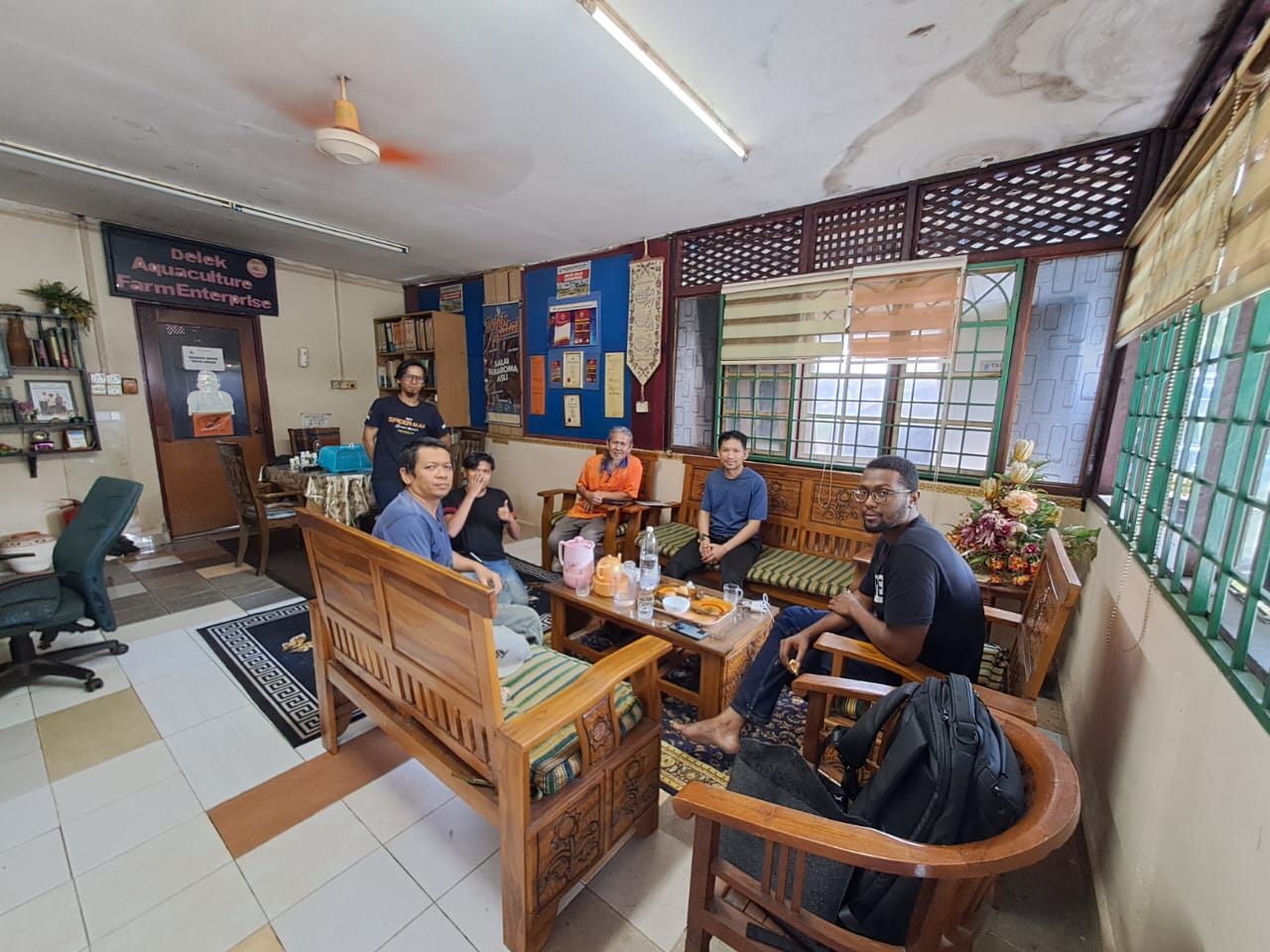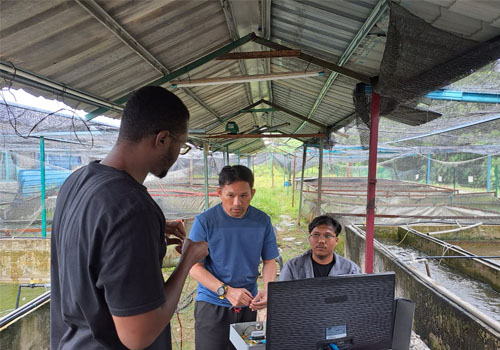
Design of Low-cost Real-time Time Biofloc Water Quality Monitoring
ABSTRACT
The expansion of fish farming in aquaculture faces challenges such as land and water limitations, feed costs and removing water toxins. Biofloc technology (BFT) is a promising approach to address all these issues. BFT is based on recycling toxic waste and uneaten feed pellets into floc biomass, which is considered a second source and can reduce feed costs. This process is achieved by promoting the growth of microorganisms with almost zero water exchange. However, water temperatures above 30 °C and pH above 9.5 can affect the growth of flocs and organisms. In addition, dissolved oxygen (DO) decreases at higher temperatures. In addition, total dissolved solids (TDS) and electrical conductivity (EC) are proportional to floc volume (FV), and in the case of FV > 50 mg/L, this leads to oxygen depletion, obstruction of fish gills and mortality by asphyxiation. In this paper, an IoT-based BFT water monitoring system is proposed that can measure water parameters such as pH, DO, TDS and EC. Nile tilapia Oreochromis niloticus are breaded cultured in BFT watering. The collected data is displayed remotely via the BLYNK cloud and Node-RED via an MQTT broker. Moreover, a mobile application is used to monitor all water parameters in real time, notifying when a parameter exceeds the ideal value. The system implemented in Delek Aquaculture Farm located at Kalng, Selangor, Malaysia. This study suggests that the proposed system based on IoT is an excellent option for a cost-effective BFT system.
Methodology
Demonstrates the system design as shown in Figure 1. The monitoring system consists of a sensor node that mainly consists of two-layer structures; the lower layer is for sensing the water parameters such as pH, TDS, EC, and temperature, while the upper layer is the application layer, which is responsible for the system node-red dashboard. The issue with Node-RED is the inability to access the dashboard remotely; to overcome this issue, MQTT-Broker is able to publish the data globally over the internet. BLYNK cloud and Node-RED provide remote access using laptop and the BLYNK mobile app.

the single-sided PCB was designed using Proteus software, as shown in Figure 3 (b). Meanwhile, the outputs of pH, temperature, EC, and TDS sensors are in the form of an analog voltage variable; thus, an analog-to-digital converter (ADC) ADS1115 module has been used. The prototype is designed to meet operational requirements under adverse environments, e.g., hot, humid, and rainy weather conditions. Thus, the deployed sensors are industrial grade and standard certified to ensure high precision, accuracy, and reliability, the system implemented in biofloc farm name “Delek Aquaculture Farm” located at lot 2224 Lornng Mujir, jalan Kampung Delek Kiri, 41250 Kalng, Selangor, Malaysia.

In BFT, elevated water temperatures exceeding 30 °C and pH levels surpassing 9.5 have the potential to impact the development of flocs and organisms. Furthermore, higher temperatures are associated with a reduction in dissolved oxygen (DO) levels. Additionally, the concentration of total dissolved solids (TDS) and electrical conductivity (EC) correlate with floc volume (FV). When FV exceeds 50 mg/L, this can result in oxygen depletion, blockage of fish gills, and mortality due to suffocation. The real-time monitoring lowers production costs, increasing productivity, reducing human dependence, and ensuring socioeconomic sustainability. The suggested system represents a cost-effective and efficient solution for managing BFT systems. By enabling real-time monitoring and timely intervention, it contributes to the sustainable growth of fish in BFT systems, ensuring optimal conditions for aquaculture while mitigating the risks associated with water parameter fluctuations. Ultimately, this technological advancement holds great potential for aquaculture, offering a pathway to more efficient and environmentally responsible fish farming practices. The proposed system can monitor water temperature, pH, EC, and TDS in real-time. Farmers can easily monitor and evaluate their farms online by using the mobile application from their homes. This study suggests that the proposed system based on IoT is an excellent option for a cost-effective BFT system.

The authors express their gratitude to the Malaysian Ministry of Higher Education for generously funding this research through the MTUN Matching Grant under Grant No. RDU212802 and UIC211503 and additional financial support from Universiti Malaysia Pahang Al-Sultan Abdullah internal grant UIC191205.






